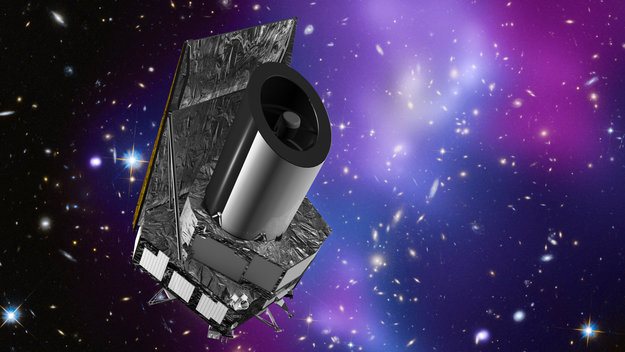The Euclid mission of the European Space Agency, with the participation of IEEC, ready to be built

– It constructs part of the instruments and leads the mission’s simulations
Euclid_large
Euclid, the mission of the European Space Agency to study the dark universe, is ready to start being built, once it has approved the preliminary design and ensured the viability of both the ship and the scientific payload.
“After many years of work, now with the approval of this phase of the project, we are sure of the scientific success of the mission, which will reveal the structure of the universe and will help us to understand the mysterious dark energy,” explains Francisco Castander, researcher at the Institute of Space Sciences (IEEC-CSIC), member of the scientific team of ESA and co-coordinator of the mission in Spain. “It’s a big step for the mission,” says Giuseppe Raca, leader of the Euclid Project. “We evaluated all the elements and we are confident that the mission is feasible and that we can do science.”
The Euclid mission is to investigate dark matter and dark energy. In 2011 the project was selected as one of the middle-class missions of the European Space Agency (ESA). Since then it has been studied the mission design to the last detail, and once everything has been checked, is time to start construction. Launch is scheduled for 2020.
Euclid: the search for the dark side of the Universe
The spacecraft, with a telescope 1.2 meters in diameter, will orbit around the L2 Lagrange point, 1.5 million km from Earth. It will collect data during six years to reveal the darkest secrets of the universe. We now know that less than 5% of the matter in the universe is visible. The rest is dark matter that we cannot see, but it is inferred that exists from its gravitational effects. Dark energy, on the other hand, would explain the accelerating expansion of the Universe. Neither dark matter nor dark energy, therefore, are currently detectable, although it is known to affect the movement and shape of galaxies, among other effects.
Euclid would map the shapes, positions and movements of two billion galaxies over more than a third of the entire sky. Analysis of these data will enable astronomers to know more about the characteristics and behavior of dark matter and dark energy.
Leading role of the IEEC
The Institute of Space Sciences (IEEC-CSIC) is part of the science team for the European Space Agency’s Euclid mission and member of the management team Euclid Consortium, formed by 1,200 people.
In addition, ICE (IEEC-CSIC) is responsible for the design and construction of the filter wheel of the infrared instrument of the mission, in collaboration with the Institute for High Energy Physics (IFAE-Barcelona). ICE also leads and coordinates the simulations of the Euclid mission, and collaborates with the Spanish scientific data center mission, located in the Scientific Information Port (PIC) on the campus of Bellaterra.
More than a thousand European scientists
The Euclid Consortium is made up of over one thousand scientists from institutions in 13 European countries. Apart from Spain: Austria, Belgium, Denmark, France, Finland, Germany, Holland, Italy, Norway, Portugal, Romania, Switzerland and the United Kingdom are involved. Also they are collaborating scientists from the United States.
